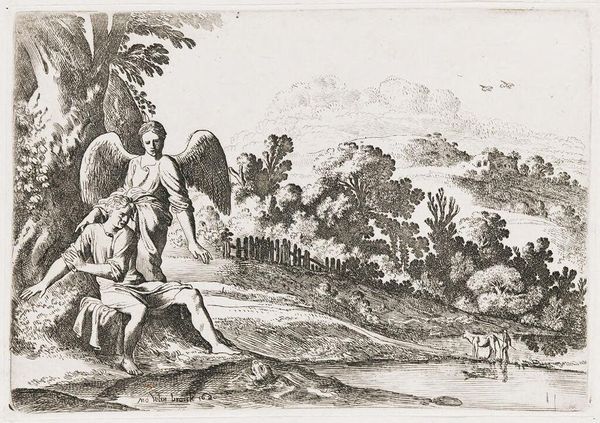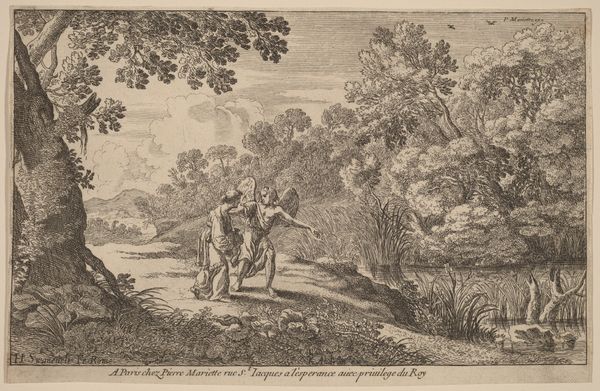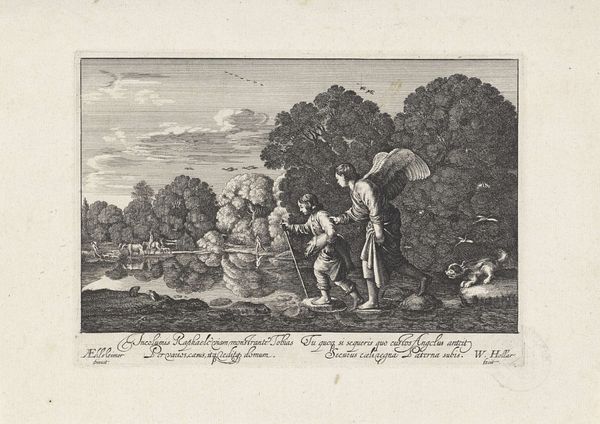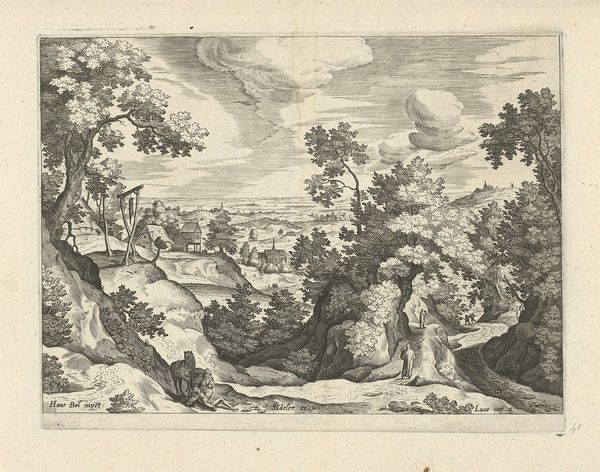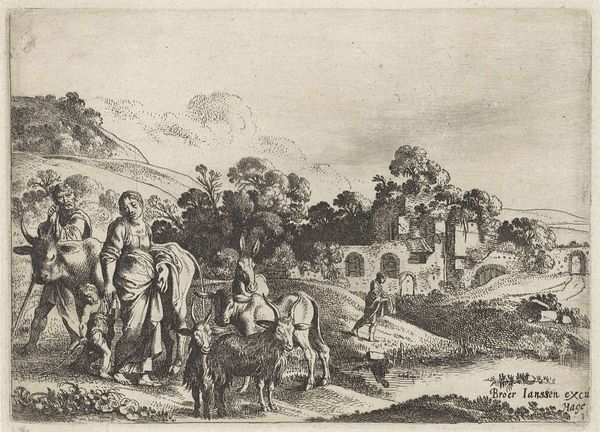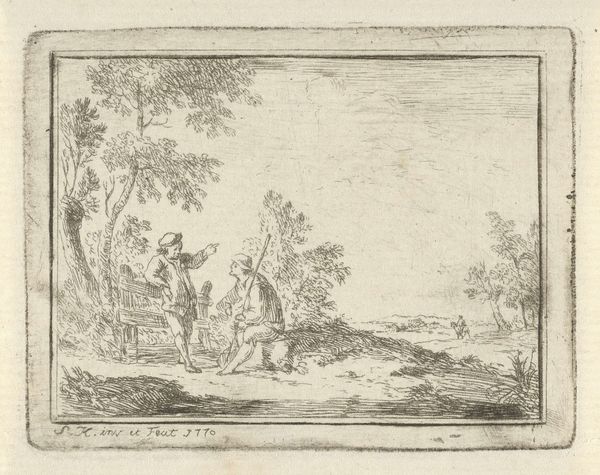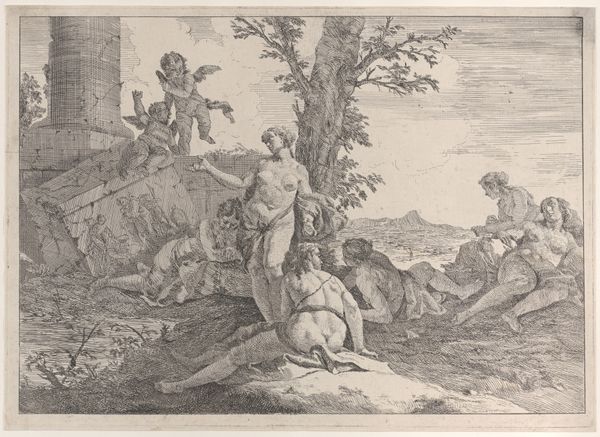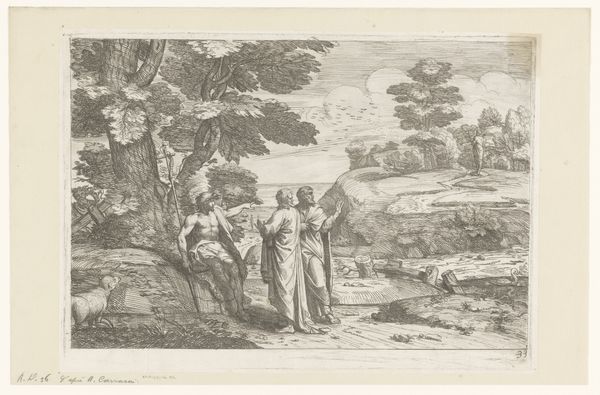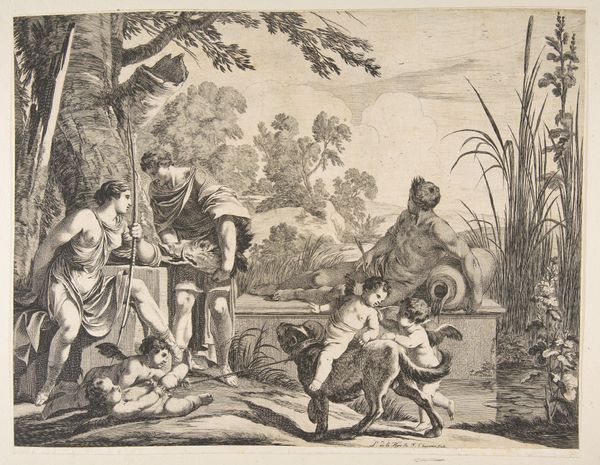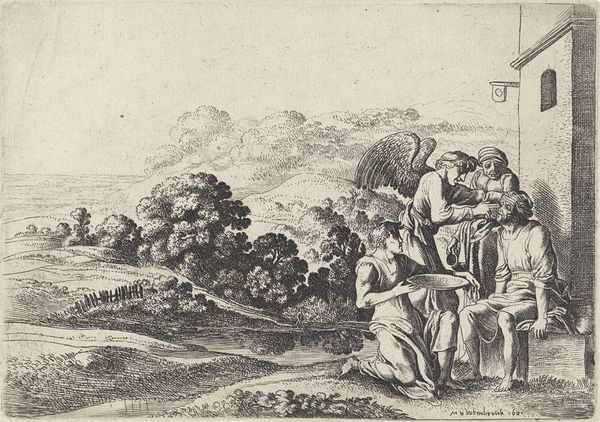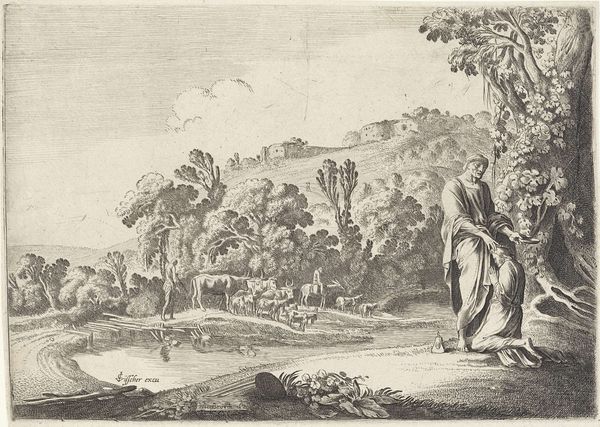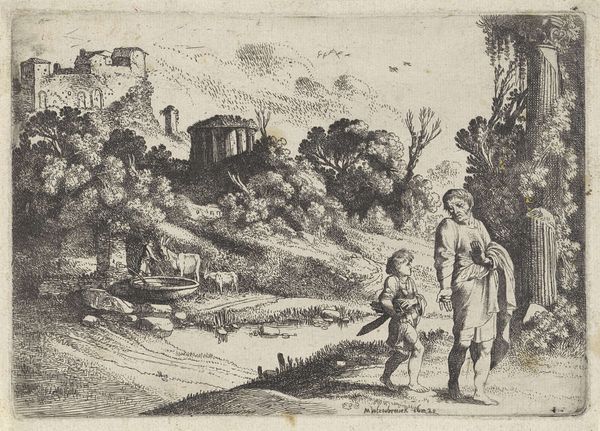
print, engraving
#
baroque
# print
#
landscape
#
figuration
#
engraving
Dimensions: height 127 mm, width 185 mm
Copyright: Rijks Museum: Open Domain
Curator: At first glance, the mood feels surprisingly serene, considering it's meant to depict surprise. The monochrome engraving lends itself to dreaminess. Editor: You’re right, there is a peculiar stillness. What we are looking at here is a print by Moyses van Wtenbrouck from about 1620, titled “Tobias schrikt van de vis” which translates to "Tobias is startled by the fish.” Curator: Ah, startled, not necessarily "scared," then? It's important we use inclusive language in how we understand emotion; fear looks very different on different bodies, especially as bodies politicized by disability studies and class struggle. Editor: Indeed. The artist rendered this moment as an etching and engraving, and the texture is key to conveying that jolt. It’s Baroque; think tenebrism in monochrome print form. The dramatic shading gives life to both Tobias, supported gently by the angel, and to the landscape, teeming with pastoral activity in the background. Curator: Landscape is such a fraught genre! In art history, landscapes have often served as alibis for systemic inequalities. Is there a dialogue, here, between human subjectivity and its surrounding ecology? Or is the angel figure acting as a mediator, as in feminist revisionist theory? Editor: Interesting point. Certainly, we can read Tobias as representative of humankind grappling with divine intervention. There’s a quiet intensity, even in the details, from the flora surrounding them to the cattle and human figures at the edge of the water in the distance. Curator: Well, Wtenbrouck composed this at a fascinating crossroads. I’d argue this work allows for consideration of gendered relations between divine beings, as well as the ecologies they exist within. We might even say the landscape is a mirror reflecting human-angel interactions. Editor: That mirror metaphor works nicely. Seeing the scene now through a lens of interpersonal reflection definitely enhances my appreciation. Curator: Absolutely. The subtle radicality of a piece like this is sometimes best appreciated through engagement with its broader contexts. Editor: A landscape that isn’t just a backdrop, but a reflection and an active participant. Thank you for the additional framework!
Comments
No comments
Be the first to comment and join the conversation on the ultimate creative platform.
